 1978 Opel Commodore C Dimensions, Size & Specs
1978 Opel Commodore C Dimensions, Size & SpecsMeasurements of the 1978 Opel Commodore C, engineered for optimal performance and comfort
| Dimensions | |
|---|---|
| Length: | 4705 mm185.2 in15.4 ft |
| Width: | 1722-1730 mm67.8-68.1 in5.6-5.7 ft |
| Height: | 1410 mm55.5 in4.6 ft |
| Ground Clearance: | 140 mm5.5 in0.5 ft |
| Trunk Capacity: | 480-630 liter17.0-22.2 cu ft |
| Trunk Capacity (Max): | 630 liter22.2 cu ft |
| Weight Specifications | |
| Curb Weight: | 1200-1260 kg2646-2778 lbs |
| Maximal permitted Weight: | 1740-1765 kg3836-3891 lbs |
| Tire Specifications | |
| Rims Size: | 14-inch rims:
|
| Tire Sizes: |
|
The Opel Commodore C, produced between 1978 and 1982, is a mid-size sedan that offered a balanced blend of classic styling and practical dimensions for its era. Measuring 4705 mm (185.2 inches) in length, the Commodore C presented a roomy exterior that comfortably accommodated passengers and cargo alike. Its width ranged from 1722 to 1730 mm (67.8 to 68.1 inches), while the height stood at a moderate 1410 mm (55.5 inches), providing a sleek, low-profile design typical of late 1970s sedans. The vehicle's curb weight varied between 1200 and 1260 kg (2645 to 2778 lbs), with a maximum weight capacity ranging from 1740 to 1765 kg (3836 to 3891 lbs), reflecting its robust build and ability to carry additional load without compromising performance.
Storage space was a strong point for the Opel Commodore C, offering a luggage capacity that spanned from 480 liters (16.9 cubic feet) up to 630 liters (22.2 cubic feet) with the rear seats folded down. This flexibility made the Commodore suitable for family use or extended trips requiring ample cargo room. The car's ride height (ground clearance) measured 140 mm (5.5 inches), ensuring decent handling over uneven road surfaces typical at the time.
The Commodore C rolled on 14-inch rims sized at 6J x 14, fitted with tire options of 175/88 R14 or 175/80 R14, which complemented the car's balance between comfort and stability. Overall, the Opel Commodore C remains a notable classic for those interested in late 20th-century European sedans, combining dependable dimensions with practical features tailored for both everyday driving and longer journeys.
Discover the standout features that make the 1978 Opel Commodore C a leader in its class
Have a question? Please check our knowledgebase first.
The Opel Commodore C, produced from 1978 to 1982, has a length of 4705 mm (185.2 inches), a width ranging between 1722 mm and 1730 mm (67.8 to 68.1 inches), and a height of 1410 mm (55.5 inches). These dimensions place it squarely within the mid-size category of its era, offering a balanced footprint ideal for both urban and highway driving. The width variation typically reflects differences in equipment or minor model year revisions.
The curb weight of the Opel Commodore C ranges from 1200 kg to 1260 kg (2646 to 2778 lbs). The maximum allowable weight, which includes passengers and cargo, falls between 1740 kg and 1765 kg (3836 to 3890 lbs). This relatively moderate weight for a mid-size sedan of its time contributed to nimble handling and efficient fuel consumption, enhancing overall driving dynamics.
The Opel Commodore C offers a luggage capacity of between 480 and 630 liters (approximately 16.9 to 22.3 cubic feet) with the rear seats upright. By folding down the rear seats, the capacity extends to a maximum of 630 liters (22.3 cubic feet), providing additional space for larger items. This flexible cargo setup made the Commodore C practical for families and those requiring occasional increased cargo room.
The Opel Commodore C has a ride height or ground clearance of 140 mm (5.5 inches). This moderate clearance is typical for sedans of the late 1970s and early 1980s, balancing aerodynamics with sufficient clearance to navigate everyday road conditions, speed bumps, and light obstacles without scraping the underside.
The Opel Commodore C is equipped with 14-inch rims, specifically sized at 6J x 14. The tire sizes compatible with this generation are 175/88 R14 and 175/80 R14. These 14-inch rims combined with relatively narrow tires are suitable for comfortable driving, balancing fuel efficiency with adequate road grip and ride comfort characteristic of mid-sized sedans of that era.
With a length of 4705 mm (185.2 inches), width between 1722 mm to 1730 mm (67.8 to 68.1 inches), and a height of 1410 mm (55.5 inches), the Opel Commodore C typically fits comfortably into a standard single-car garage. Most residential garages measure around 2400 mm to 2700 mm (94.5 to 106 inches) in width and about 4800 mm (189 inches) in length, allowing sufficient clearance around the vehicle for easy access and parking, although the driver should consider the inward opening of garage doors and any storage objects that may reduce effective space.
Compared to the predecessor Commodore B, the Commodore C is slightly larger, offering improved interior space and a more modern design reflective of late 1970s automotive trends. The length increase to 4705 mm (185.2 inches) provided more legroom and luggage space. The Commodore C also featured updated styling and engineering enhancements that contributed to better ride quality and efficiency. This generation focused on refining comfort and practicality over drastic size shifts, creating a more competitive mid-size sedan within Opel's lineup.
The Opel Commodore C's dimensions align well with competing mid-size sedans from other European manufacturers of the late 1970s and early 1980s, such as the BMW E21 3 Series and the Ford Granada Mk2. With a length close to 4705 mm (185.2 inches), it is slightly larger than many compact cars but comparable to European executive sedans of that time. Width and height are also standard for its class, enabling it to offer competitive interior space and comfort while maintaining manageable exterior proportions for European roads.
The Opel Commodore C is known for its solid build quality, balanced performance, and practicality. Manufactured between 1978 and 1982, this mid-size sedan typically came with a range of inline-six or four-cylinder engines delivering reliable power suitable for its size and weight. The car featured a spacious interior, versatile luggage capacity, and handling characteristics aimed at combining comfort and driver engagement. Its sedan body style emphasized a formal yet practical design philosophy popular during the era.
The Opel Commodore C is designed with tire sizes 175/88 R14 and 175/80 R14, paired with 6J x 14 rims. These tires provide a balanced combination of grip, ride comfort, and fuel efficiency. The slightly taller 175/88 R14 tires offer a smoother ride and better absorption of rough road surfaces, while the 175/80 R14 tires contribute to a slightly sportier feel with marginally firmer handling. Overall, these tire sizes complement the car's mid-size sedan characteristics by delivering safe and comfortable road performance.
Discover similar sized cars.
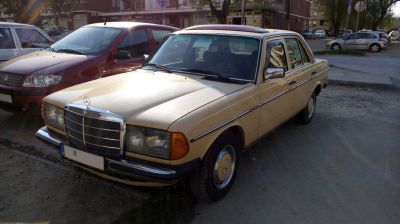
| Production: | 1975-1985 |
|---|---|
| Model Year: | 1975 |
| Length: | 4725-4848 mm186.0-190.9 in |
| Width: | 1786 mm70.3 in |
| Height: | 1438 mm56.6 in |
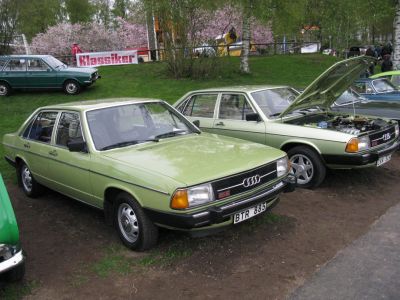
| Production: | 1976-1979 |
|---|---|
| Model Year: | 1976 |
| Length: | 4680 mm184.3 in |
| Width: | 1768 mm69.6 in |
| Height: | 1390 mm54.7 in |
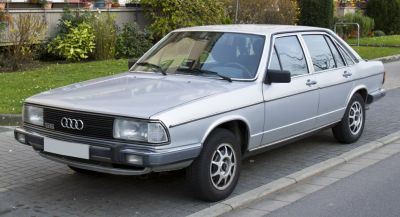
| Production: | 1979-1982 |
|---|---|
| Model Year: | 1979 |
| Length: | 4683 mm184.4 in |
| Width: | 1768 mm69.6 in |
| Height: | 1390 mm54.7 in |

| Production: | 1979-1982 |
|---|---|
| Model Year: | 1979 |
| Length: | 4695 mm184.8 in |
| Width: | 1768 mm69.6 in |
| Height: | 1390 mm54.7 in |
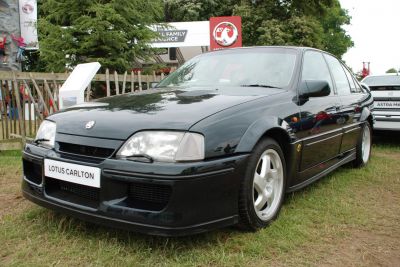
| Production: | 1986-1994 |
|---|---|
| Model Year: | 1986 |
| Length: | 4768 mm187.7 in |
| Width: | 1933 mm76.1 in |
| Height: | 1435 mm56.5 in |
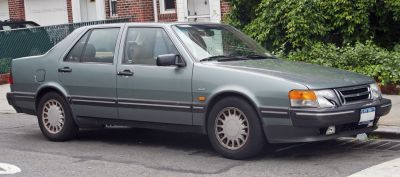
| Production: | 1985-1998 |
|---|---|
| Model Year: | 1986 |
| Length: | 4620-4794 mm181.9-188.7 in |
| Width: | 1764 mm69.4 in |
| Height: | 1420 mm55.9 in |

| Production: | 1988-1993 |
|---|---|
| Model Year: | 1988 |
| Length: | 4680 mm184.3 in |
| Width: | 1750 mm68.9 in |
| Height: | 1410 mm55.5 in |
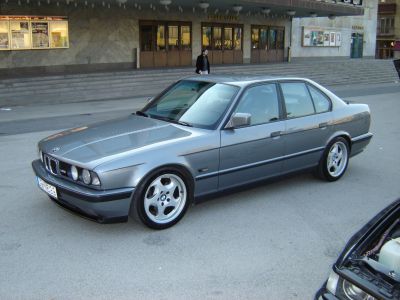
| Production: | 1988-1994 |
|---|---|
| Model Year: | 1988 |
| Length: | 4720 mm185.8 in |
| Width: | 1751 mm68.9 in |
| Height: | 1392 mm54.8 in |
